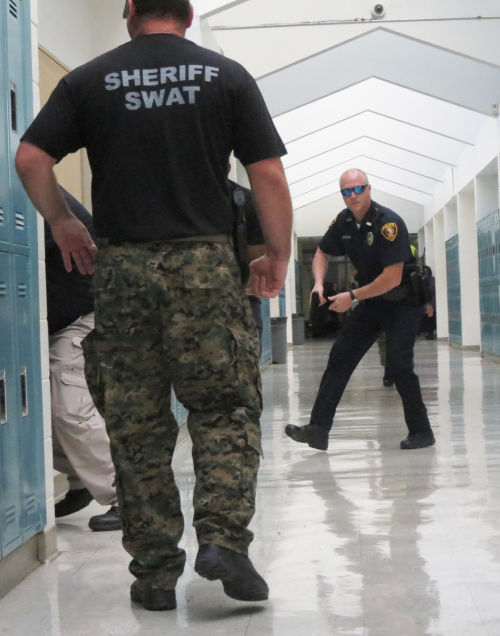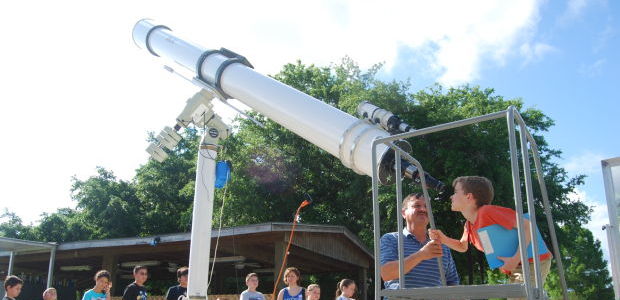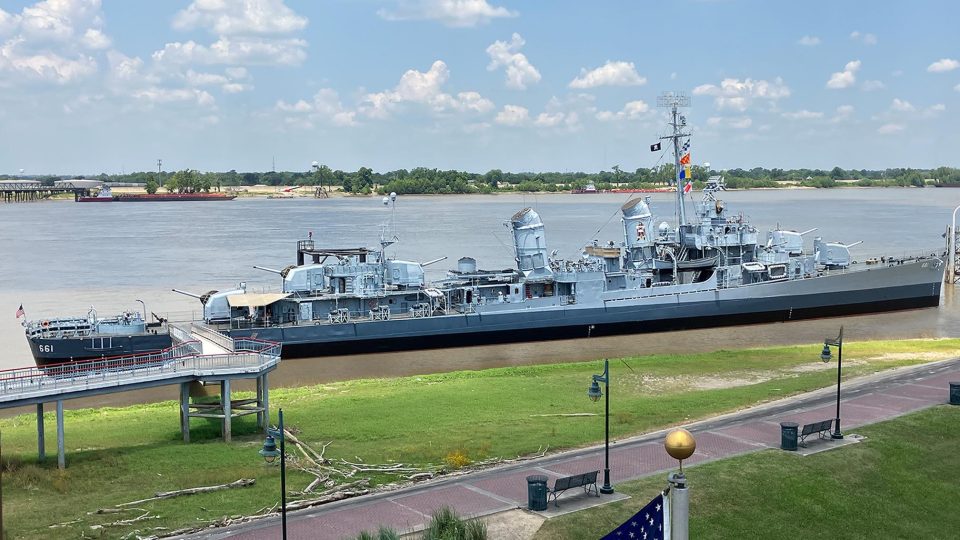More talk, but no action on state’s TOPS changes
June 18, 2013
Terrebonne schools, authorities get shooting training
June 18, 2013Astronaut Story Musgrave tends to speak in the present tense when recalling thoughts and emotions incurred during his six space flights, the last of which having embarked nearly seven years ago.
Musgrave, 77, spent more than 53 days in space. He travelled longer distances in one flight (more than 7 million miles) than most people will in a lifetime. For the retired spacewalker, it appears this defining time of his life intensified a calculated quest to quench the curiosity evident in his searching blue eyes.
He takes pride in the optical phenomena he’s witnessed and said it was always facilitated by preparation and coordination, strategies that also apply to ground life. A space shuttle’s window offers a perspective unique to the limited number of humans who have entered the Earth’s orbit, and as someone who makes it a challenge to see new things in all walks of life, Musgrave didn’t take the privilege for granted.
“I work very hard at seeing. I work very hard at what you can see, with binoculars and with the naked eye,” Musgrave told the Tri-Parish Times during a half-hour interview over Big Mike’s Smokehouse BBQ catered at the St. George Observatory.
While in space, Musgrave preferred peering out the window of a dark shuttle, lights out and computers covered during what he describes as night passes. “Night, in a lot of ways, is more magical than daytime. … There are so many stars that you can barely find the ones you are familiar with.”
The vibrant colors caused by colliding matter to form the auroras – the northern and southern lights – are “outrageous, one of my favorite things,” he said. He claims to have seen sprites – vertical lightning extending up from clouds – before they were defined. He’s seen streaks of purple horizontal lightning long enough to stretch from Houma to New Orleans. And then there’s “The Glory,” the rainbow-esque halo around an airplane’s shadow that arises when the aircraft is aligned between the sun and a flat cloud.
“I was the first astronaut to ever even think about looking for The Glory,” said Musgrave, who sought out the multi-ring circle for a while, struggling to find it until he realized it was much larger than he anticipated – about 100 miles in diameter.
“When I go to space, I carry a black book, and it’s got, on average, 100 things for me to do. If you don’t do that, you’re going to miss, see? You don’t just go into space and find The Glory. You’re not going to see it. Nor do you see the Great Wall of China. Nor do you see Ayers Rock Uluru in Australia. You have to think about the grand things you could see (beforehand, in order to see them).”
In order to locate Mount Everest from space, for instance, Musgrave plotted from the ground a way to delineate the peak from the rest of the Himalayas, which look similar from space. For his reference points, he used two, more-distinguishable lakes in the region.
Musgrave didn’t check off every item from his black book. “I don’t think the rainbow is possible (because of the angle), but it didn’t stop me from trying,” he said. “I have to look because I don’t want the physics to kill me.”
Practiced, intense observing was a hobby compared to the work he and his crew were sent to accomplish.
Spaceflight is largely about the “smoothness in which you get to the goal,” he said, and the performance of detailed tasks in a free-fall environment. Musgrave, who was an astronaut for 30 years and is the only person to fly on all five space shuttles, flew two missions classified under the Department of Defense, was the first astronaut to test his spacesuit and was the lead spacewalker on a mission to repair the Hubble Telescope.
“The first time, you don’t know what the f— they’re going to do to you,” Musgrave said, later apologizing for his language. “It’s shake, rattle and roll. You want to get there. … I belong there, so I want to be there, but I can only ride the current vehicle that’s available.”
Even during the launches, essentially a controlled explosion, the man who described himself as risk-adverse found a way to capture a unique perspective, fashioning a mirror to his wrist so he could look beyond the bolts holding him in place and through the only window in proximity, behind him.
Musgrave was in Schriever on Monday to give a presentation to summer campers at the St. George Observatory. He told students to take life one step at a time toward self-improvement, that at their age he had no idea the future would present him a chance to spacewalk and that they can’t be certain what it holds for them.
Before the space program was initiated, Musgrave was born on a dairy farm in Stockbridge, Mass. He has recalled being a child of abuse and remembers wandering the forests alone at night at 3 years old. Two years later, he floated homebuilt rafts along rivers. At 10, he was driving trucks and tractors, and at 13, he was repairing them.
His somewhat primitive childhood forced varied skills upon Musgrave at a young age, and he continually built upon those talents as he matured, becoming one of NASA’s foremost engineers, a designer of the spacesuit and the Hubble Telescope.
Musgrave entered the space program at 29 years old. “There was an announcement on the bulletin board,” he said. “They said the program was coming. … When I saw that program was coming, I made a commitment to it,” leaving surgery clinical to study graduate level physiology.
The retired astronaut is a doctor in math, computers, chemistry, medicine, physiology, literature and psychology; a Marine; a former trauma surgeon; an aircraft pilot who accumulated more than 18,000 hours; and a father of seven.
St. George’s camp, offering science experiments, astrological education and telescopic views of the sun to children 5 and older, ends this week, but observatory owner and curator Ken Stage said he would host another camp session if enough children express interest. Registration is $250 per camper. For more information, call (985) 448-1934 or email curator@StGeorgeObservatory.com.
Joining Musgrave at the observatory was guest speaker Dr. Mike Reynolds, an astronomy professor at Florida State College researching meteors and the solar system. A self-professed science geek from a young age who matured with NASA’s space program, Reynolds has led scientific expeditions throughout the world and camped for three weeks in Antarctica to study geology.
“My main thing I’ve been focused on the past couple of years is science education, the whole STEM arena – science, technology, engineering and mathematics,” Reynolds said. “I feel pretty strongly that we’ve got to supercharge things a bit in this country as far as interest and focus in the sciences, or we’re going to be in trouble. … Science needs to be as hands-on, involved, as possible.”
At Stage’s camp, students were expected to participate in a National Weather Service balloon launch, a crime scene investigation presentation and interactive lessons in dissection, biology, physical science, rockets, medieval siege engines and sundials, in addition to other activities.
Monday’s presentations drew attendance from Louisiana Board of Elementary and Secondary Education member Lottie Beebe. Berwick High School biology teacher Mary Macklin, a regular at the observatory, was also expected to lead sessions.
Reynolds’ roving campaign on the importance of hands-on learning to keep children actively engaged in the sciences runs parallel to the life Musgrave has lived as an instrument of achieving levels of human consciousness that were once unfathomable, he said.
Outreach programs and summer camps, both of which the Schriever observatory is known for, aim to spark a commitment among coming generations to investigate the great questions and unfound spectacles that remain beyond natural sightlines.
Summer campers at St. George Observatory take turns using owner and curator Ken Stage’s telescope to view the sun. Below, Astronaut Story Musgrave tells the campers about how he came to be a spacewalker and the values of space travel.












